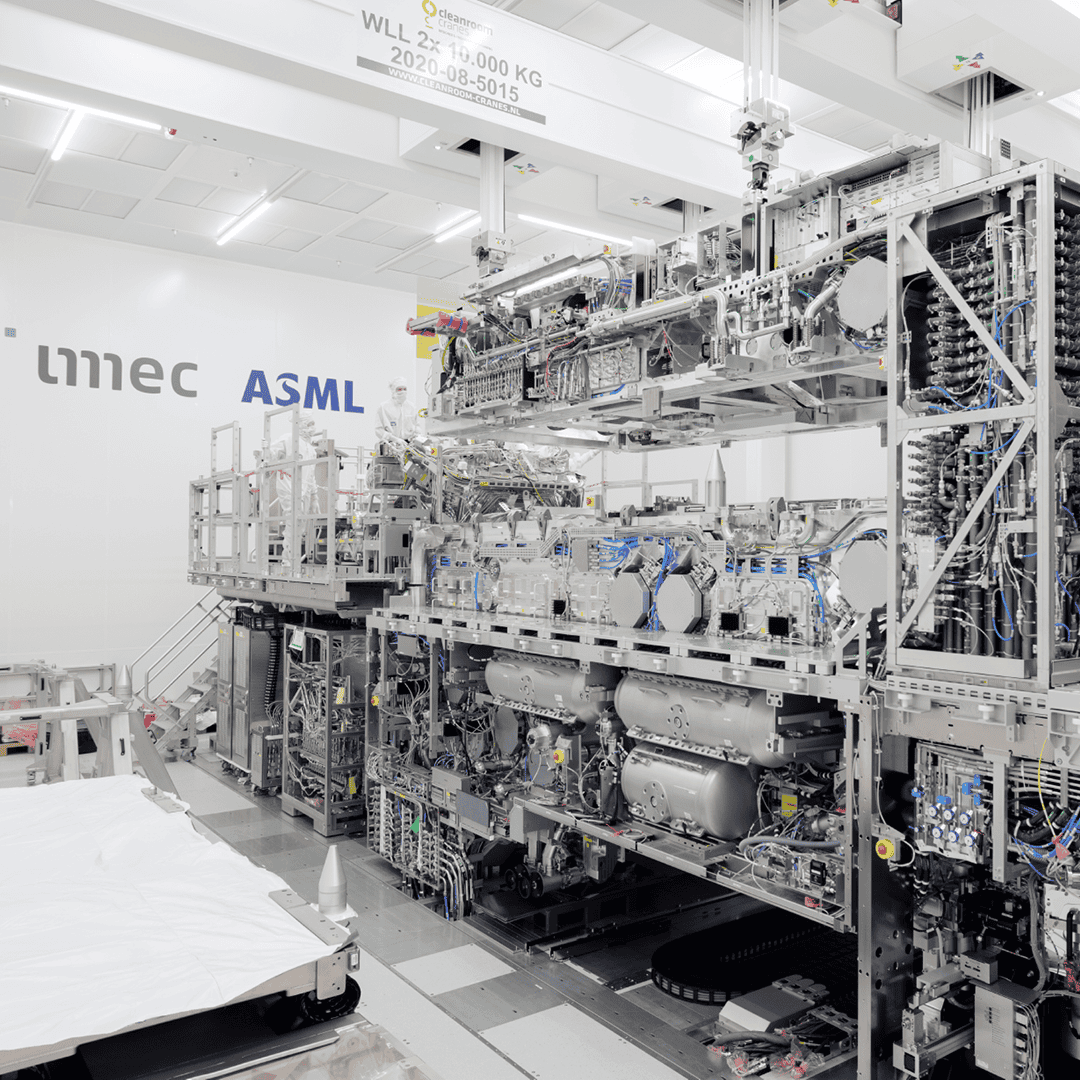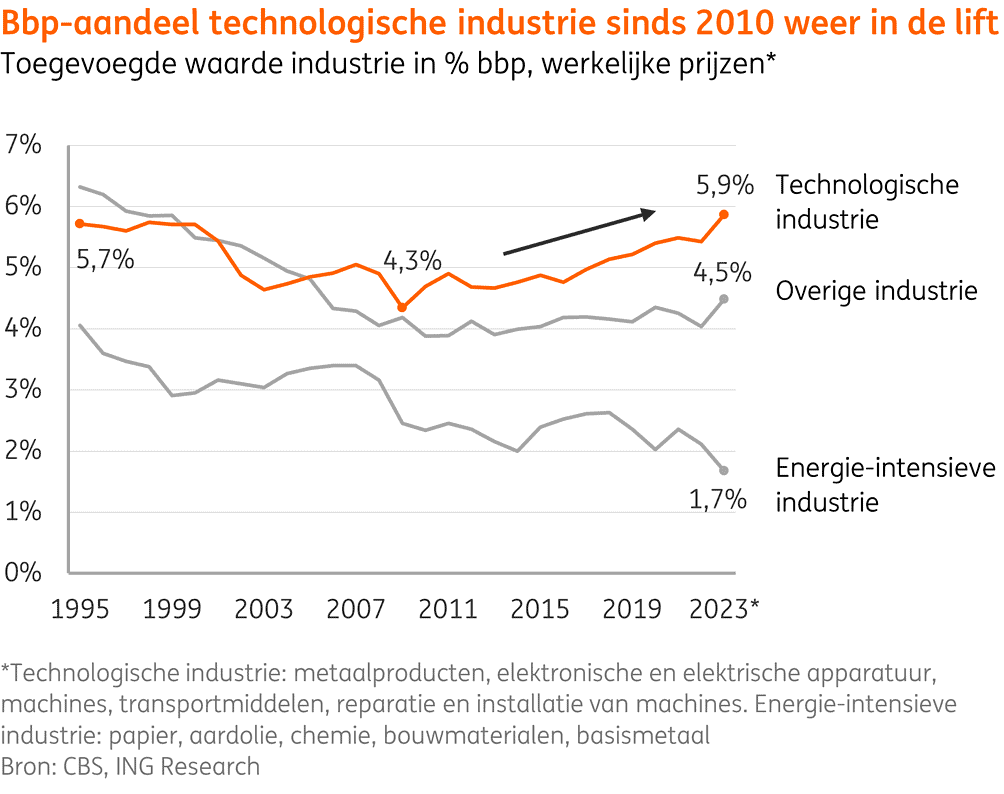
The world’s demand for technology products is growing structurally due to digitalization, electrification, and artificial intelligence breakthroughs. As a result, the tech sector has become the growth engine of the overall Dutch industry over the past few years and is now pulling up the entire industry’s growth rate. However, structural labor shortages continue to frustrate the sector. Productivity growth seems to be the only answer.
This is according to a publication by ING Research that discusses the growth capacity of the technology industry.
In over 50 years, manufacturing’s share of the economy has more than halved, but mainly due to the technology industry’s growth, its share of the economy increased from 10.7% in 2013 to 12% in 2023. The semiconductor cluster benefited the most from this: for example, Dutch chip machine manufacturers quickly gained ground with a sales share of more than 60% – mainly from ASML (50%) – in the machine industry, the most significant technological growth industry. The starting position is vital: the technology industry in the Netherlands is excessively robotized, and, with 205 robots per 10,000 people employed, it even has the highest robotization rate of the major Western industrial countries. Moreover, the researchers write that there is still plenty of growth potential.
Innovation is needed
Exploiting that growth potential does require further productivity-enhancing technological innovations, as the sector’s labor shortage threatens to become increasingly severe. After the tightening of the expat regulations, this may be exacerbated by stricter requirements for labor, study, and knowledge migrants. This demands even more intensive knowledge cooperation and investment in R&D from companies and governments. Increasing scale is a prerequisite for coping with rising costs for many technological manufacturing companies.
Gert Jan Braam, ING Sector Banker Industry: “Technology manufacturers have proven to be the new growth engine of the Dutch industry. However, that growth can only be sustained with a steep innovation curve. For companies located more at the beginning of production chains, there is usually a lot to be gained by optimizing processes such as robotization and digitization. At the end of the chain, end producers can grow faster by increasing the market value of their product range through product innovations.”

Technological manufacturing companies have become a considerable industry growth engine over the past five years, averaging almost 6% yearly growth. Within the technology industry, the machinery (+12% per year), other transport equipment (+7%), and electrical appliances (+4%) subsectors have grown particularly fast. Viewed over 12 years, the electronic appliances and components industry is also among the four technological subsectors that have seen the most robust growth.
Staff shortages remain the biggest bottleneck
Therefore, forward-thinking companies in the technology industry see not so much demand but more the lack of capacity as a structural obstacle. Network congestion is a growing problem, but the physical space needed for company buildings and employee housing is also often in short supply. The very high network tariffs in the Netherlands and increased (European) regulatory pressure are also usually perceived as bottlenecks. However, industrial entrepreneurs consider the most significant limiting factor for future growth to be the increasing shortage of personnel.
In contrast to many other countries, the Netherlands plans to tighten the requirements for labor, study, and knowledge migrants further after making expat regulations more restrictive. As a result, the future growth of the technology industry will depend even more on productivity increases, making it imperative for manufacturing companies to focus even more emphatically on process and product innovations.
Read the entire publication (Dutch)

